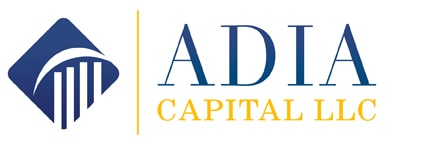Getting the most from trade show attendance requires planning in advance. And if you do it right it can help you choose the best equipment for your needs AND get the best pricing at the same time.
Tradeshows are one place that almost every capital equipment buyer goes to see, try out and purchase the latest in their industry. But even veteran show attendees usually end up with just these takeaways from busy shows:
- Bag full of literature they don’t need – that literature and even the entire bag, untouched, can often be found in and around offices months after the show.
- Business cards – sometimes with notes scribbled on the back. Occasionally these can be useful, but like the literature, there are stacks of cards in desk drawers all over America just taking up space.
- Freebies and promo products – which can be fun, but most often are a waste of time for you and the vendor handing them out.
Attending tradeshows in any industry takes time away from making money IN your business and costs money for entry, travel and staying for multiple days.
So, you simply have to make the most of your attendance.
The most successful trade show attendees know what a successful show looks like for them and makes a plan according to their goals.
Before the Show | Preparing to Attend a Trade Show
Even after decades of attending and exhibiting at shows with Adia Capital, we know it’s easy to become overwhelmed with the variety of equipment there. So… here’s what to do before the show:
#1: Determine what you need now or what you will need in the next 6-12 months
Other than just “seeing what’s out there” you should have a short list of things you know you’ll need to grow your business or to solve current business problems.
New Equipment Examples:
For example, if you’re in the custom t-shirt business doing direct to garment or screen printing you may be interest in adding an embroidery machine because you’ve been getting request for custom caps.
Or if you are large format print house creating signs and banners and need more capacity you may look at an additional printer or moving to a larger one for higher volume printing.
Think of attending the NAB show because your expanding your local TV station or video production company? You may need anything from studio equipment to satellite trucks.
There’s a trade show for every industry, so even if farming or medicine is your business niche making that punch list of equipment is a must.
You can also put new supply vendors, software providers or even outsourced talent on your Needs List.
#2: Compare your Needs List to the Exhibitor and Course List
There can be HUNDREDS of exhibitors at a trade show. When you consider the sheer quantity you’ll see that there are simply too many to not have a list of target booths.
Since you’ve already decided the kinds of things you’ll need to see all you need to do is visit the tradeshow website and check out the exhibitor list. Then compare the 2 and decide who you really need to visit.
Download the show floor map and plot your route. Many shows even provide free mobile apps to give you directions when you’re on the ground.
There are often courses you can take during the event as well. They can be VERY useful, so make sure you examine that schedule as well and don’t miss an educational opportunity that fits what you want to accomplish.
So, prioritize what your business needs, research the vendors that are attending and what you want to see SPECIFICALLY. Of course, leave time to be surprised!
Get Pre-Approved for Financing
Knowing how much money you have to work with, what payments you can afford and how that will impact your cash flow can give you a REAL advantage during a show!
Take that equipment list you’ll need to grow over the next 6-12 months and the pricing you researched for them and visit https://adiacapital.com/application/ to get pre-approved.
- Dealing with a finance broker like Adia Capital directly can sometimes get you better rates, payments and terms on equipment.
- Having that approval in advance will allow you to take advantage of at-the-show DEALS.
- Save your time – if you do not get approved for financing in advance you can adjust your expectations for what you can purchase at the show.
Getting approved typically takes under 4 business hours.
During the Show | Working the Show Floor
Because you did your homework in advance you’re much more likely to get in front of the right vendors. Here are a few tips on getting the most out of visiting each booth.
- Take notes or ask permission to record.
Buying equipment is a BIG decision. If you’re comparing multiple vendors it can be a challenge to differentiate between the equipment and the demonstrator or salesperson.
In other words, it’s great to be able to buy from someone you like and that seems knowledgeable, but they may not be representing the very best equipment for your situation. That’s where notes can come in handy.
Make sure you take clear notes about the pros and cons of each piece of equipment. Or better yet, record the demonstration or conversation.

- Be the fly on the wall
That means don’t be shy about listening in on demonstrations to other people, companies or groups. They will have different needs, approaches and questions than you do, so you can learn more about your business niche in general AND the equipment you’re searching for.
- Buy off the floor
If you’re SURE you’ve found the equipment for you, buy off the show floor! Sometimes you can score great deals from vendors that just don’t want to rebox equipment – and you’ll often save hundreds on shipping costs too.
Most vendors are set up to take orders during the show. And since you did your research in advance you’ll be able to tell a good deal when you hear one.
The best part is how easy it will be to buy if you got pre-approved with Adia Capital equipment financing. You can call us right from the show floor and we’ll make arrangements directly with the vendor!
Get Pre-Approved with Adia Capital LLC Here: http://adiacapital.com
After the Tradeshow

Surprisingly, you cannot expect every vendor you met at the show to call or follow up with an email. Shows are hectic for equipment sellers and their follow up isn’t always the best.
Luckily, that doesn’t reflect on the quality of the equipment or the company itself, just on their sales and marketing systems.
Plus, equipment manufacturers and distributors have a LOT to do after a trade show; break down the booth, travel back to the office and catch up on all the business they missed while at the show.
Therefore, it’s up to you to reach out if you want to cement that great deal, get the show special or take the next step in purchasing new equipment.
First – get organized by putting your notes in a CRM so you have all the contact information, records of conversations and notes about what you thought about equipment and people while it’s still fresh.
Next – make decisions. Evaluate everything you saw and compare that to your pre-show research list.
Lastly – make that purchase or those supplier changes! After all, it’s what you went to the show for in the first place. You’ll find the longer you wait, the less likely you are to do anything at all.
That would make attending the show an expense you could have, and should have avoided.




